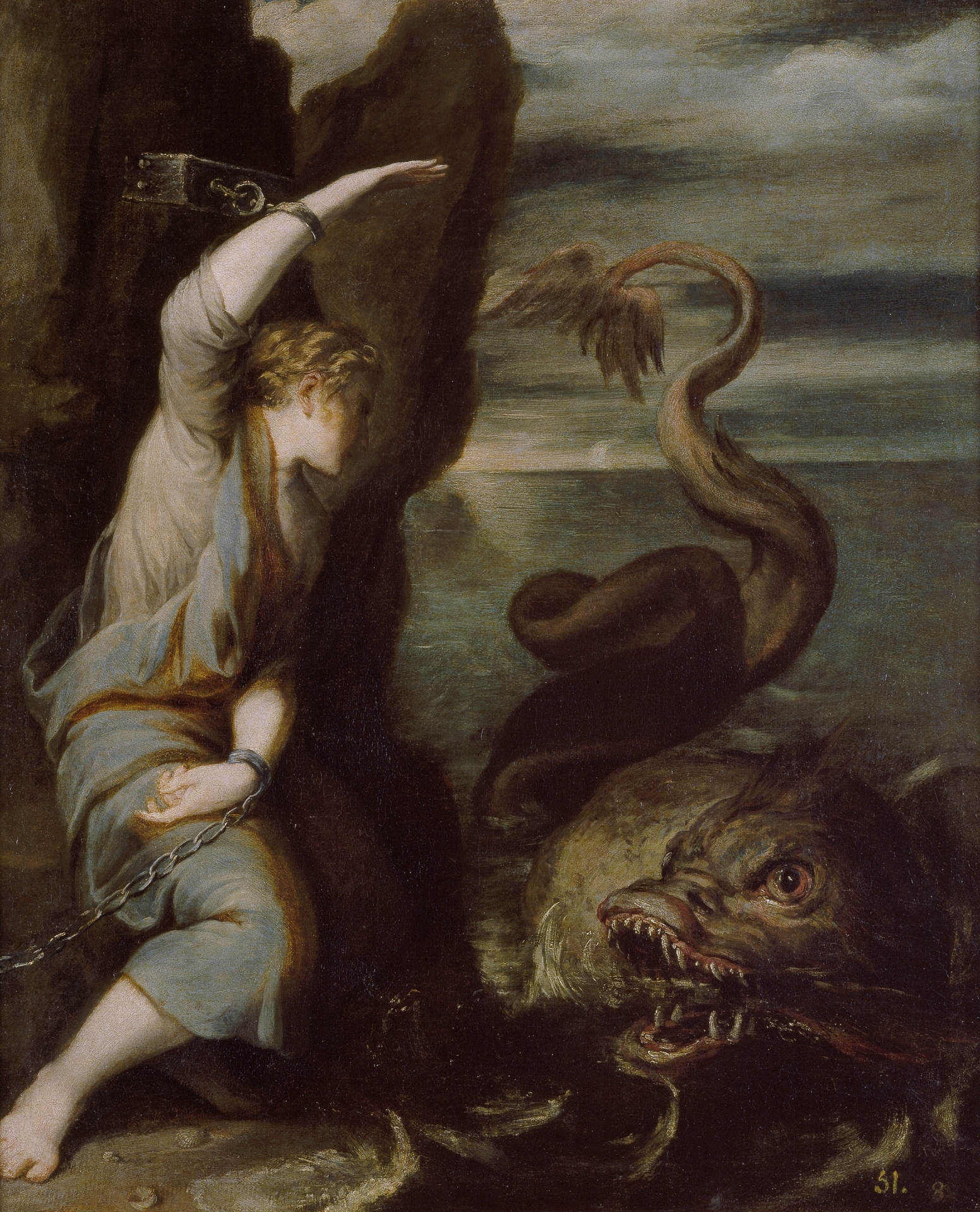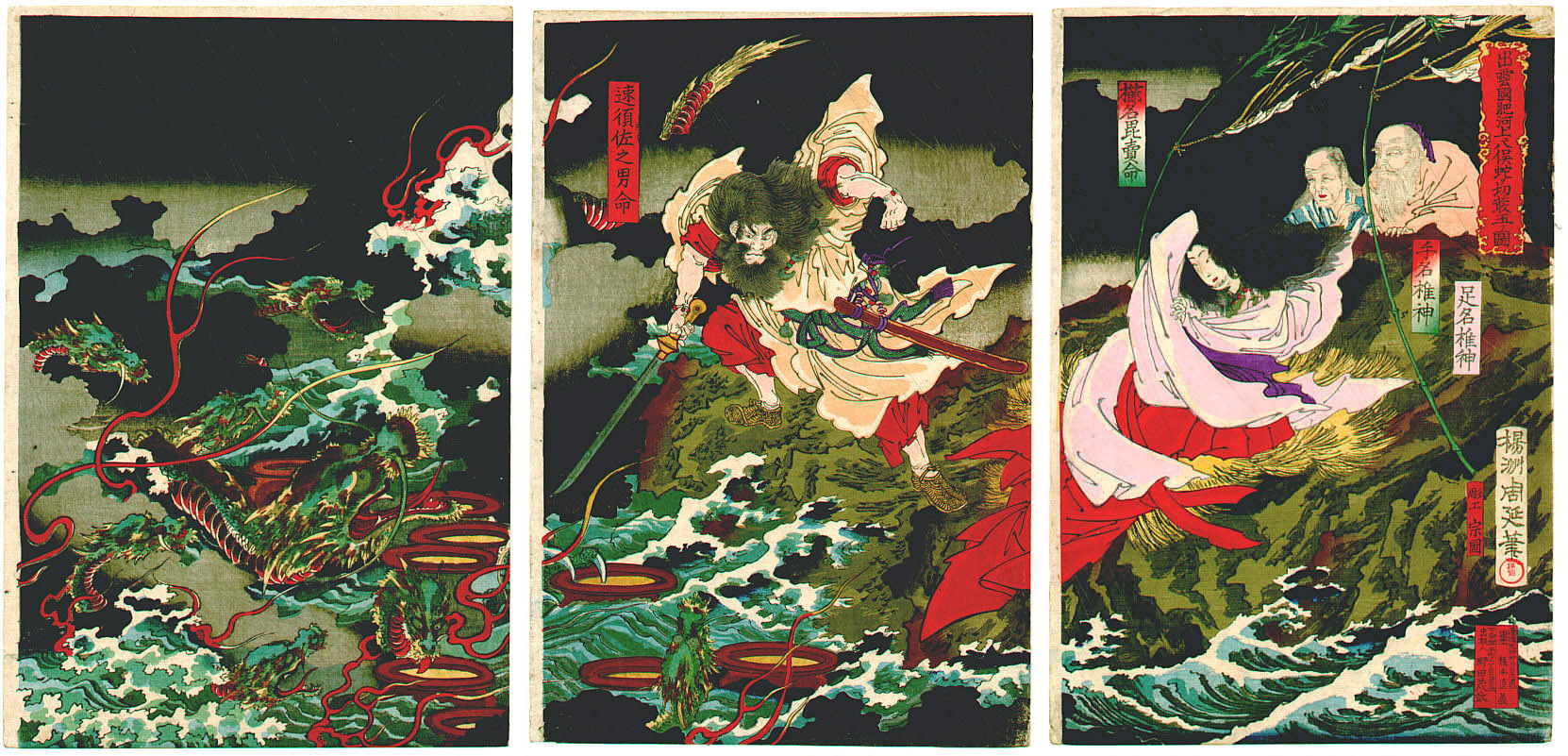|
Princess And Dragon
Princess and dragon is a archetypical premise common to many legends, fairy tales, and chivalric romances. Northrop Frye identified it as a central form of the quest romance. The story involves an upper-class woman, generally a princess or similar high-ranking nobility, saved from a dragon, either a literal dragon or a similar danger, by the virtuous hero (see Damsel in distress). She may be the first woman endangered by the peril, or may be the end of a long succession of women who were not of as high birth as she is, nor as fortunate. Normally the princess ends up married to the dragon-slayer. The motifs of the hero who finds the princess about to be sacrificed to the dragon and saves her, the false hero who takes his place, and the final revelation of the true hero, are the identifying marks of the Aarne–Thompson folktale type 300, the Dragon-Slayer. They also appear in type 303, the Two Brothers. These two tales have been found, in different variants, in countries all ... [...More Info...] [...Related Items...] OR: [Wikipedia] [Google] [Baidu] |
Perseus
In Greek mythology, Perseus (Help:IPA/English, /ˈpɜːrsiəs, -sjuːs/; Greek language, Greek: Περσεύς, Romanization of Greek, translit. Perseús) is the legendary founder of Mycenae and of the Perseid dynasty. He was, alongside Cadmus and Bellerophon, the greatest Greek hero and slayer of monsters before the days of Heracles. He beheaded the Gorgon Medusa for Polydectes and saved Andromeda (mythology), Andromeda from the sea monster Cetus (mythology), Cetus. He was the son of Zeus and the mortal Danaë, as well as the half-brother and great-grandfather of Heracles (as they were both children of Zeus, and Heracles' mother was descended from Perseus). Etymology Because of the obscurity of the name "Perseus" and the legendary character of its bearer, most etymologists presume that it might be pre-Greek; however, the name of Perseus's native city was Greek and so were the names of his wife and relatives. There is some idea that it descended into Greek from the Proto-Indo-Eu ... [...More Info...] [...Related Items...] OR: [Wikipedia] [Google] [Baidu] |
Kushinadahime
, also known as or Inadahime among other names, is a goddess (''kami'') in Japanese mythology. She is one of the wives of the god Susanoo, who rescued her from the monster Yamata no Orochi. Name The goddess is named 'Kushinadahime' (櫛名田比売) in the ''Kojiki'', while the '' Nihon Shoki'' variously names her 'Kushiinadahime' (奇稲田姫), 'Inadahime' (稲田姫), and 'Makamifuru-Kushiinadahime' (真髪触奇稲田媛). 'Inadahime' may be translated either as "lady / princess ('' hime'') of Inada", with "Inada" (稲田) here being understood as the name of a place in Izumo Province (part of what is now the town of Okuizumo (formerly Yokota) in Nita District, Shimane Prefecture), or "lady / princess of the rice fields" (''inada'' literally translated means "rice field" or "rice paddy"). The element ''kushi'' (Old Japanese: ''kusi'') meanwhile is usually interpreted as the adjective meaning "wondrous"; it is homophonous with the word for "comb" (櫛), which features in ... [...More Info...] [...Related Items...] OR: [Wikipedia] [Google] [Baidu] |
Susanoo-no-Mikoto
__FORCETOC__ Susanoo (; historical orthography: , ) is a in Japanese mythology. The younger brother of Amaterasu, goddess of the sun and mythical ancestress of the Japanese imperial line, he is a multifaceted deity with contradictory characteristics (both good and bad), being portrayed in various stories either as a wild, impetuous god associated with the sea and storms, as a heroic figure who killed a monstrous serpent, or as a local deity linked with the harvest and agriculture. Syncretic beliefs that arose after the introduction of Buddhism to Japan also saw Susanoo becoming conflated with deities of pestilence and disease. Susanoo, alongside Amaterasu and the earthly Ōkuninushi (also Ōnamuchi) – depicted as either Susanoo's son or scion depending on the source – is one of the central deities of the imperial Japanese mythological cycle recorded in the ( CE) and the (720 CE). One of the gazetteer reports () commissioned by the imperial court during the same peri ... [...More Info...] [...Related Items...] OR: [Wikipedia] [Google] [Baidu] |
Yamata No Orochi
, or simply , is a legendary eight-headed and eight-tailed Japanese dragon/serpent. Mythology Yamata no Orochi legends are originally recorded in two ancient texts about Japanese mythology and history. The 712 AD transcribes this dragon name as and the 720 AD writes it as . In both versions of the Orochi myth, the Shinto storm god Susanoo (or "Susa-no-O") is expelled from Heaven for tricking his sister Amaterasu, the sun goddess. After expulsion from Heaven, Susanoo encounters two near the head of the , now called the , in Izumo Province. They are weeping because they were forced to give the Orochi one of their daughters every year for seven years, and now they must sacrifice their eighth, , who Susanoo transforms into a for safekeeping. The tells the following version: The also describes Yamata no Orochi: "It had an eight-forked head and an eight-forked tail; its eyes were red, like the winter-cherry; and on its back firs and cypresses were growing. As it crawled ... [...More Info...] [...Related Items...] OR: [Wikipedia] [Google] [Baidu] |
Poseidon
Poseidon (; grc-gre, Ποσειδῶν) was one of the Twelve Olympians in ancient Greek religion and myth, god of the sea, storms, earthquakes and horses.Burkert 1985pp. 136–139 In pre-Olympian Bronze Age Greece, he was venerated as a chief deity at Pylos and Thebes. He also had the cult title "earth shaker". In the myths of isolated Arcadia he is related with Demeter and Persephone and he was venerated as a horse, however, it seems that he was originally a god of the waters.Seneca quaest. Nat. VI 6 :Nilsson Vol I p.450 He is often regarded as the tamer or father of horses, and with a strike of his trident, he created springs which are related to the word horse.Nilsson Vol I p.450 His Roman equivalent is Neptune. Poseidon was the protector of seafarers, and of many Hellenic cities and colonies. Homer and Hesiod suggest that Poseidon became lord of the sea when, following the overthrow of his father Cronus, the world was divided by lot among Cronus' three sons; Zeus w ... [...More Info...] [...Related Items...] OR: [Wikipedia] [Google] [Baidu] |
Nymph
A nymph ( grc, νύμφη, nýmphē, el, script=Latn, nímfi, label=Modern Greek; , ) in ancient Greek folklore is a minor female nature deity. Different from Greek goddesses, nymphs are generally regarded as personifications of nature, are typically tied to a specific place or landform, and are usually depicted as maidens. They were not necessarily immortal, but lived much longer than human beings. They are often divided into various broad subgroups, such as the Meliae (ash tree nymphs), the Dryads (oak tree nymphs), the Naiads (freshwater nymphs), the Nereids (sea nymphs), and the Oreads (mountain nymphs). Nymphs are often featured in classic works of art, literature, mythology, and fiction. Since the Middle Ages, nymphs have been sometimes popularly associated or even confused with fairies. Etymology The Greek word has the primary meaning of "young woman; bride, young wife" but is not usually associated with deities in particular. Yet the etymology of the noun remains ... [...More Info...] [...Related Items...] OR: [Wikipedia] [Google] [Baidu] |
Cassiopeia (Queen Of Ethiopia)
Cassiopeia (; Ancient Greek: Κασσιόπεια ''Kassiópeia'' or ''Kassiópē'') or Cassiepeia (Κασσιέπεια ''Kassiépeia''), a figure in Greek mythology, was Queen of Aethiopia and wife of King Cepheus. She was arrogant and vain, characteristics that led to her downfall. Family Her origins are obscure. Nonnus calls her a nymph, while according to Stephanus, she was called Iope, the daughter of Aeolus, from whom the town of Joppa (now the Jaffa neighborhood in Tel Aviv) derived its name. Mythology Cassiopeia boasted that she and her daughter Andromeda were more beautiful than all the Nereids, the nymph-daughters of the sea god Nereus. This brought the wrath of Poseidon, ruling god of the sea, upon the kingdom of Ethiopia. Accounts differ as to whether Poseidon decided to flood the whole country or direct the sea monster Cetus to destroy it. In either case, trying to save their kingdom, Cepheus and Cassiopeia consulted a wise oracle, who told them that the o ... [...More Info...] [...Related Items...] OR: [Wikipedia] [Google] [Baidu] |
Troy
Troy ( el, Τροία and Latin: Troia, Hittite language, Hittite: 𒋫𒊒𒄿𒊭 ''Truwiša'') or Ilion ( el, Ίλιον and Latin: Ilium, Hittite language, Hittite: 𒃾𒇻𒊭 ''Wiluša'') was an ancient city located at Hisarlik in present-day Turkey, south-west of Çanakkale and about miles east of the Aegean Sea. It is known as the setting for the Greek mythology, Greek myth of the Trojan War. In Ancient Greek literature, Troy is portrayed as a powerful kingdom of the Greek Heroic Age, Heroic Age, a mythic era when monsters roamed the earth and gods interacted directly with humans. The city was said to have ruled the Troad until the Trojan War led to its complete destruction at the hands of the Greeks. The story of its destruction was one of the cornerstones of Greek mythology and literature, featuring prominently in the ''Iliad'' and the ''Odyssey'', and referenced in numerous other poems and plays. Its legacy played a large role in Greek society, with many prominent ... [...More Info...] [...Related Items...] OR: [Wikipedia] [Google] [Baidu] |
Hesione
In Greek mythology and later art, the name Hesione ( /hɪˈsaɪ.əniː/; Ancient Greek: Ἡσιόνη) refers to various mythological figures, of whom the Trojan princess Hesione is most known. Mythology According to the '' Bibliotheca'', the most prominent Hesione was a Trojan princess, daughter of King Laomedon of Troy, sister of Priam and second wife of King Telamon of Salamis. The first notable myth Hesione is cited in is that of Hercules, who saves her from a sea monster. However, her role becomes significant many years later when she is described as a potential trigger of the Trojan War. Apollo and Poseidon were angry at King Laomedon because he refused to pay the wage he promised them for building Troy's walls. Apollo sent a plague and Poseidon a sea monster to destroy Troy.Smith, p. 34 Oracles promised deliverance if Laomedon would expose his daughter Hesione to be devoured by the sea monster Cetus (in other versions, the lot happened to fall on her) and he exposed h ... [...More Info...] [...Related Items...] OR: [Wikipedia] [Google] [Baidu] |
Heracles
Heracles ( ; grc-gre, Ἡρακλῆς, , glory/fame of Hera), born Alcaeus (, ''Alkaios'') or Alcides (, ''Alkeidēs''), was a divine hero in Greek mythology, the son of Zeus and Alcmene, and the foster son of Amphitryon.By his adoptive descent through Amphitryon, Heracles receives the epithet Alcides, as "of the line of Alcaeus", father of Amphitryon. Amphitryon's own, mortal son was Iphicles. He was a great-grandson and half-brother (as they are both sired by the god Zeus) of Perseus, and similarly a half-brother of Dionysus. He was the greatest of the Greek heroes, the ancestor of royal clans who claimed to be Heracleidae (), and a champion of the Olympian order against chthonic monsters. In Rome and the modern West, he is known as Hercules, with whom the later Roman emperors, in particular Commodus and Maximian, often identified themselves. The Romans adopted the Greek version of his life and works essentially unchanged, but added anecdotal detail of their own, so ... [...More Info...] [...Related Items...] OR: [Wikipedia] [Google] [Baidu] |









